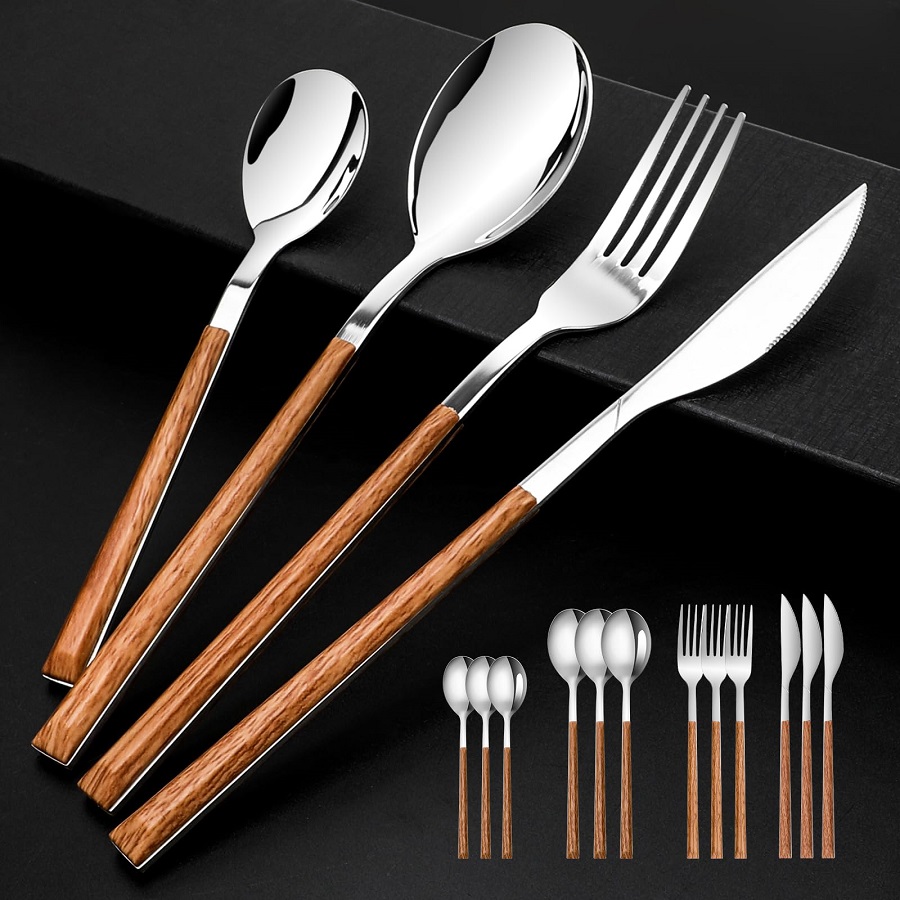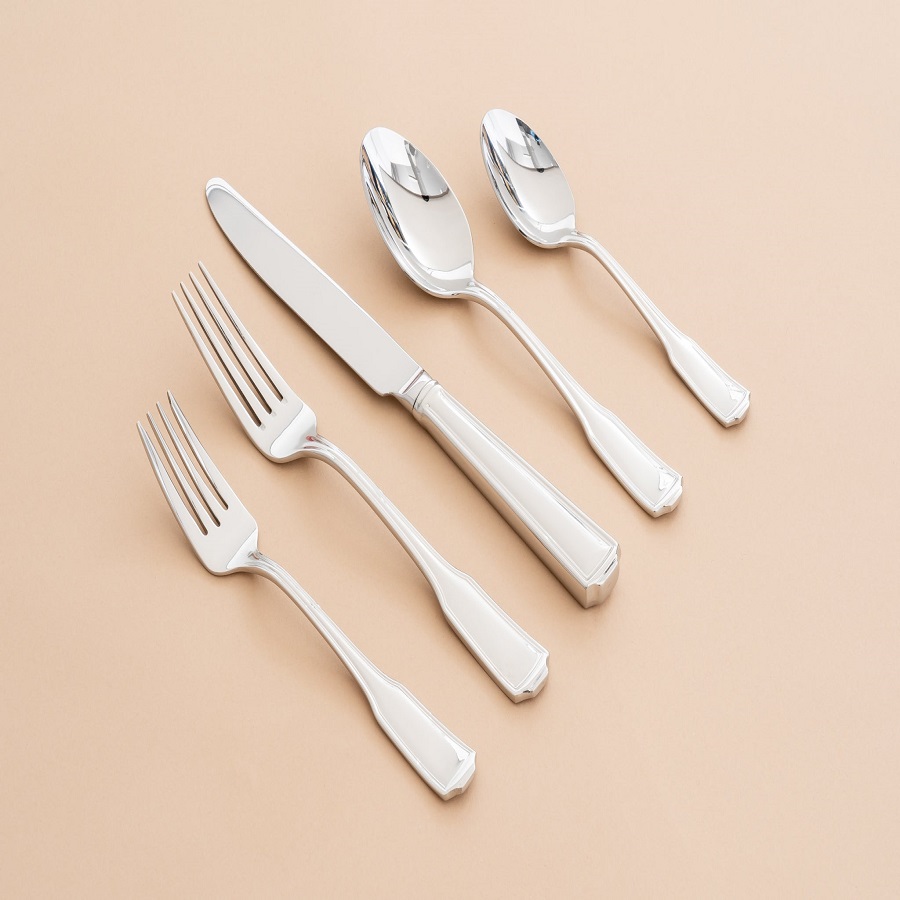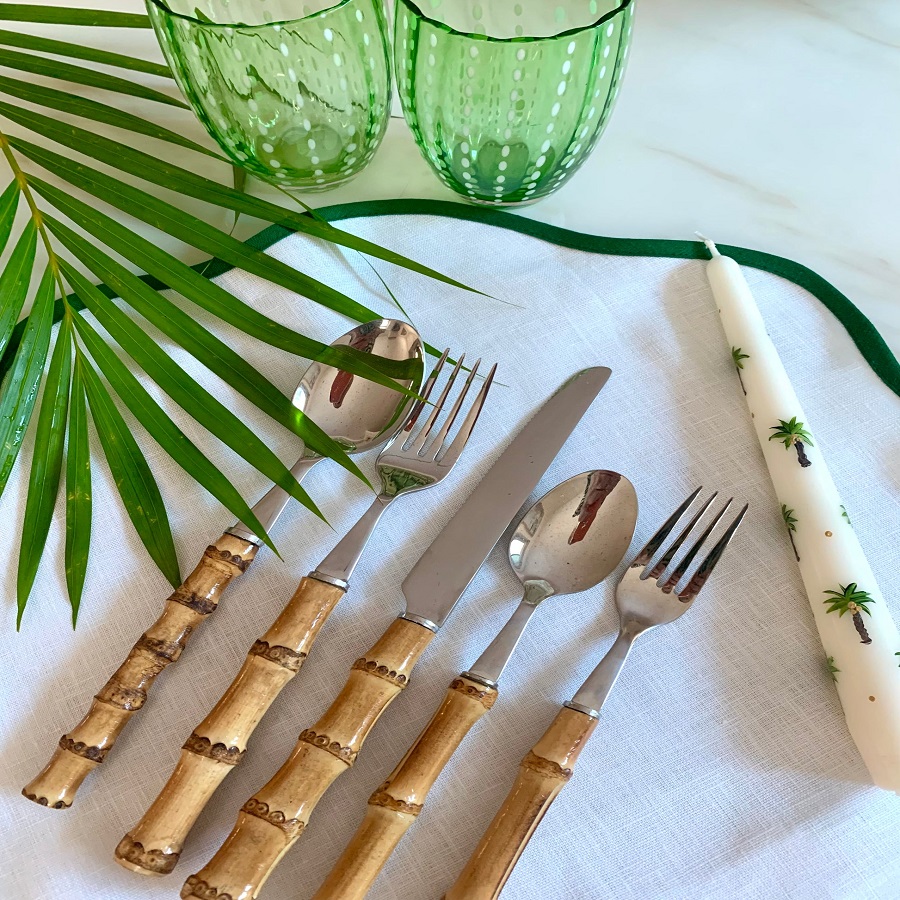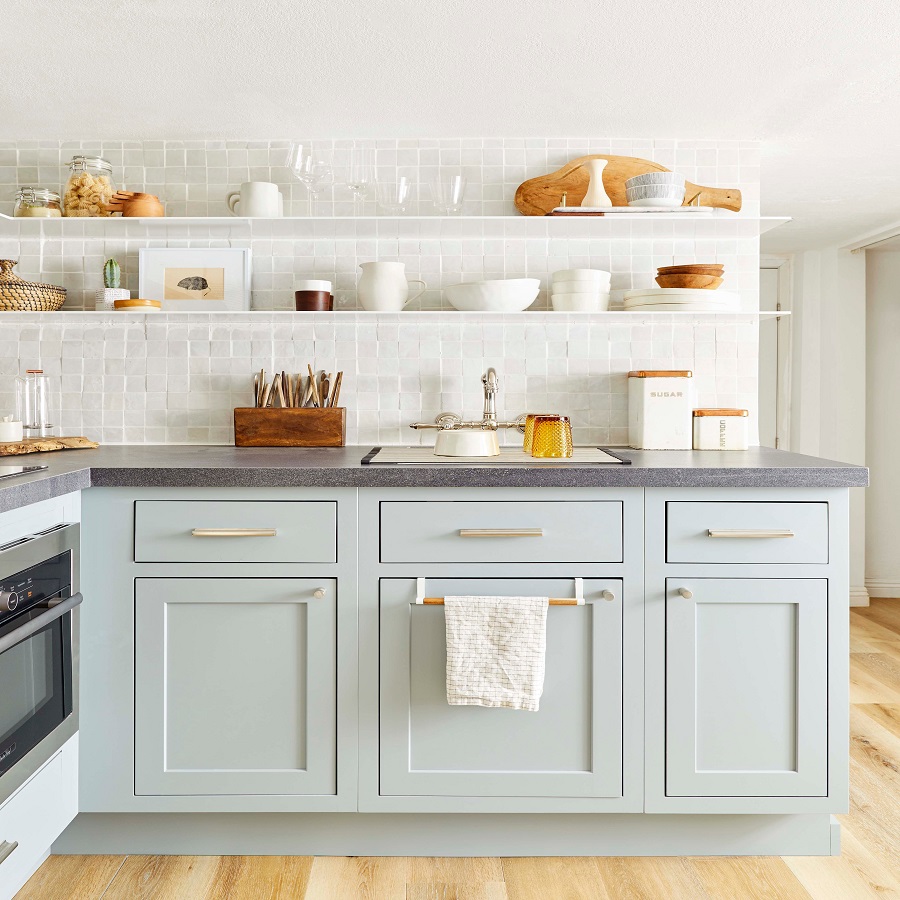Defining Cutlery and Utensils
When discussing ‘cutlery vs utensils’, understanding what each term describes is key. Cutlery typically refers to handheld tools used for preparing, serving, and eating food. This generally includes knives, forks, and spoons that are essential for cutting, spearing, and scooping during meals.
In contrast, utensils encompass a broader category. They include the entire spectrum of tools that assist in the eating and cooking process. While all cutlery can be considered utensils, not all utensils fall under the category of cutlery.
For example, spatulas, serving tongs, and ladles are utensils that serve specific purposes during food preparation or service but are not categorized as cutlery. It is important to note that the use of these terms can sometimes overlap in casual conversation, but for the purposes of clarity, their definitions should be kept distinct.
Embedding the correct usage of ‘cutlery vs utensils’ in our vocabulary ensures precise communication, especially in contexts like culinary arts, hospitality, and home kitchen conversations.
Remember, cutlery is for eating, while utensils are the entire toolkit at your disposal in the kitchen and dining area. With this in mind, you can confidently distinguish between a set of knives, forks, and spoons and the wider array of tools used for cooking and serving.
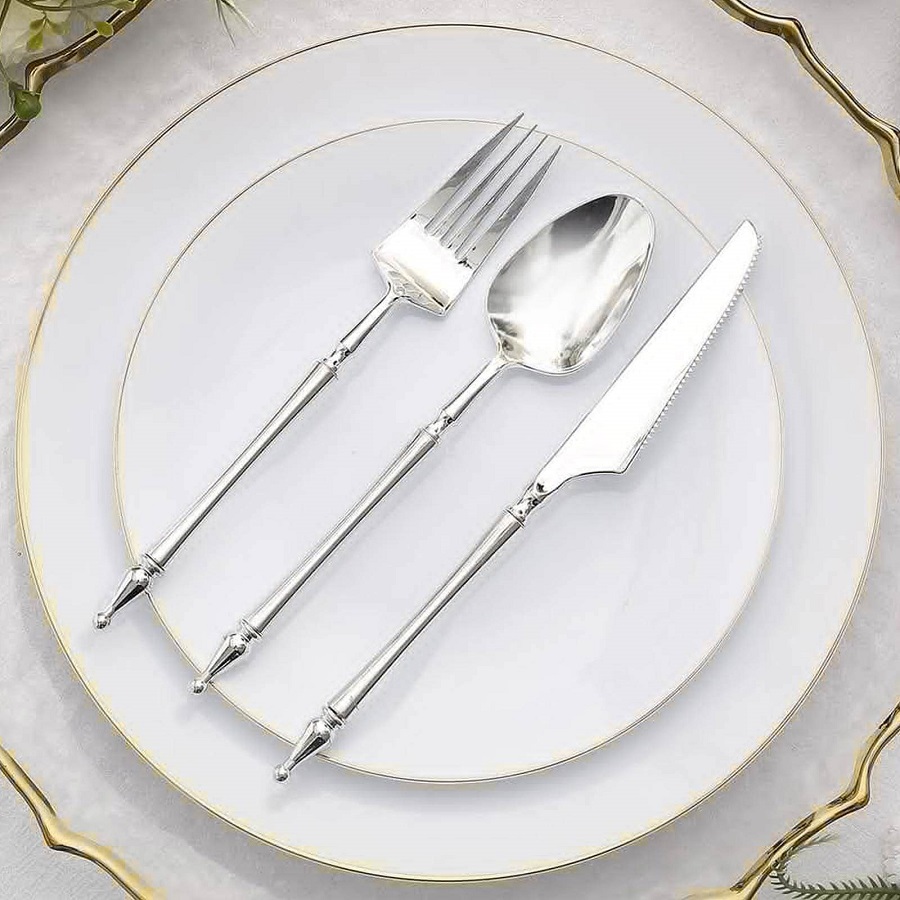 Historical Evolution of Eating Tools
Historical Evolution of Eating Tools
The historical evolution of eating tools is a fascinating journey. Tracing back to ancient civilizations, eating tools were rudimentary. Early humans used their hands, and later, simple implements carved from wood or bones. As societies developed, so did the sophistication of these tools.
In the Middle Ages, cutlery usage became more widespread in Europe, but it was often just a knife for cutting and a spoon for soup or porridge. Forks were rare and seen as an unnecessary luxury. It was not until the 18th century that forks became commonplace at the dining table in the West.
In the East, chopsticks have been the go-to cutlery for millennia, showcasing a different historical path for eating instruments. Throughout time, materials for making eating tools evolved from natural elements to include metals such as bronze, silver, and iron.
Today, we see a diverse array of cutlery and utensils made from various materials. Each piece of cutlery, from knives to spoons and forks, boasts its own unique history and development. In our kitchens and dining rooms, utensils have expanded to become specialized tools for different cooking techniques and serving scenarios.
From the hands of our ancestors to the modern, carefully crafted utensils and cutlery we use today, these tools have adapted to meet the demands of culinary evolution and dining etiquette. Knowing the ‘cutlery vs utensils’ distinction helps us appreciate the heritage behind the tools we so often take for granted.
Types of Cutlery
Understanding the different types of cutlery is crucial when setting a table or preparing for a meal. Cutlery refers to any hand-held implement used in preparing, serving, and especially eating food in the Western world. Let’s delve into the three most common types of cutlery—knives, forks, and spoons—each designed with a specific function in mind.
Knives
Knives are one of the oldest tools used by humans and come in various shapes and sizes, tailored to diverse cutting tasks. In the context of cutlery vs utensils, knives used at the dining table usually have a sharp edge and are made for cutting and slicing food. There are different types of knives for different foods, such as steak knives with serrated blades perfect for cutting through meat, and butter knives with dull edges designed for spreading.
Forks
Forks typically feature several tines with which to pierce and hold food. They come in different styles, including dinner forks, salad forks, and dessert forks. Smaller forks are generally used for appetizers or desserts, while larger forks are for the main course. Each style of fork aligns with a certain type of eating, whether it’s twirling pasta or delicately spearing a piece of fruit.
Spoons
Spoons are designed with a shallow bowl at the end of a handle, suitable for liquids or soft foods. They range from large serving spoons to smaller teaspoons. For cutlery vs utensils, the spoon often complements the fork and knife, especially when consuming soups, cereals, or desserts. Their designs might differ slightly, with soup spoons having larger, rounder bowls and teaspoons being more diminutive for stirring and sipping.
These cutlery types are essential in Western dining and have evolved to cater to various culinary traditions and personal preferences. Recognizing the subtle differences among them is part of mastering table etiquette and enjoying a meal to its fullest.
Types of Utensils Beyond Cutlery
When exploring the topic of ‘cutlery vs utensils’, it is important to look beyond the basics of knives, forks, and spoons. The world of utensils encompasses a wide variety of tools that are essential for cooking and serving. These items play a crucial role in food preparation, helping to enhance the ease and efficiency of the cooking process.
Serving Tools
Serving tools are designed for the presentation and portioning of food at the table. Key examples include:
- Serving Spoons: These have larger bowls than regular spoons, making them ideal for dishing out portions.
- Serving Tongs: Used to grab and serve items like salads or pasta without the need for multiple utensils.
- Ladles: With a deep bowl attached to a long handle, ladles are perfect for serving soups and stews.
- Pie Servers: These have a triangular flat surface that helps in lifting and serving slices of pie or cake.
- Cheese Knives: Specially designed to cut through different types of cheese with ease.
Each serving tool offers a unique function and helps streamline the serving process during meal times.
Cooking Utensils
Cooking utensils are the backbone of any kitchen and include a range of tools such as:
- Spatulas: Essential for flipping, turning, and spreading. They come in various shapes and sizes.
- Whisks: Designed for mixing ingredients, often used in baking and sauce-making.
- Wooden Spoons: Durable and non-conductive, wooden spoons are great for stirring and mixing.
- Slotted Spoons: These allow liquids to drain away while lifting the solid ingredients.
- Measuring Cups and Spoons: Precision is key in cooking, and these utensils ensure the correct proportions.
By expanding our understanding of ‘cutlery vs utensils’, we can appreciate the diversity and necessity of these indispensable kitchen tools.
Material Choices for Cutlery and Utensils
Cutlery and utensils come in various materials. Each material has its pros and cons. When selecting cutlery vs utensils, consider durability, maintenance, and aesthetic appeal. Let’s examine the common materials: stainless steel, plastic, and wood.
Stainless Steel
Stainless steel is a top choice for both cutlery and utensils. It is durable, resistant to rust, and easy to clean. Most households prefer stainless steel for its long lifespan and sleek look. It is ideal for everyday use and formal dining. When discussing cutlery vs utensils, stainless steel options provide strength for knives and a polished finish for forks and spoons.
Plastic
Plastic utensils are often lightweight and colorful. They are affordable and disposable, making them popular for picnics and casual events. However, plastic is less durable and not eco-friendly. It’s suitable for temporary use or when budget constraints apply. In the cutlery vs utensils debate, plastic is more common in utensils than cutlery.
Wood
Wood provides a natural and rustic touch to kitchens and dining tables. Wooden utensils are great for non-stick cookware, as they won’t scratch surfaces. Wood is eco-friendly, but requires more care to prevent damage from moisture and heat. Wood is less common in cutlery but widely appreciated in utensils like spoons and spatulas.
Material choice impacts function, style, and sustainability in the context of ‘cutlery vs utensils’. Consider these factors to meet your specific needs in the kitchen and dining area.
Cultural Variations in Cutlery and Utensil Use
The use of cutlery and utensils varies widely across cultures. In the West, the trio of knife, fork, and spoon is standard. But elsewhere, different tools and traditions dictate dining customs. In many Asian countries, chopsticks are the primary eating instruments. These slender sticks require skill and practice to manoeuvre, but are deeply ingrained in cultural habits. In parts of Africa and the Middle East, hands are often used to consume food, with bread serving as a utensil for scooping. This method emphasizes a tactile connection with food and a communal style of eating. In India, you may find a combination of cutlery use and hand-eating, depending on the dish. Each culture’s approach to ‘cutlery vs utensils’ reflects its history, cuisine, and social values. Understanding these customs is vital for showing respect and enjoying the dining experience in various cultural contexts.
Proper Table Etiquette with Cutlery and Utensils
Proper table etiquette is important for many reasons. It shows respect for your hosts and fellow diners. It also helps you feel confident in formal settings. Knowing the basics of cutlery vs utensils can be very useful.
- Set Up: Lay your cutlery in the order of use. Forks on the left, knives and spoons on the right.
- Using Cutlery: Start from the outside and work your way in with each course.
- Resting & Finished Positioning: Lay your fork and knife diagonally on your plate. This signals you’re resting or done eating.
- Utensil Handling: Hold your knife and fork with a firm grip. Yet, keep it comfortable and controlled.
When you use utensils right, dining becomes more enjoyable. It reflects your knowledge of the difference between cutlery and utensils. For example, you wouldn’t use a steak knife to spread butter. Nor would you pick up serving tongs to eat pasta.
The ‘cutlery vs utensils’ knowledge also means using tools like ladles and pie servers appropriately during serving. For gatherings that involve cooking tools, like barbecues, it’s helpful to know your way around spatulas and tongs.
Observing the rules of table etiquette can turn a simple meal into an elegant experience. Good manners at the table are a sign of respect and sophistication. They make you a graceful guest and a courteous host.
Care and Maintenance for Cutlery and Utensils
Caring for cutlery and utensils is key for their longevity. Proper maintenance ensures they stay functional and look great over time. Here are simple yet effective ways to care for your eating tools and kitchen gadgets.
- Regular Cleaning: Wash cutlery and utensils soon after use. This prevents food from drying and sticking. For stainless steel and wood, avoid soaking for long periods. Hand wash with warm soapy water and dry promptly.
- Avoiding Rust and Tarnishing: Stainless steel is prone to rust if left wet. Dry your cutlery and utensils well after washing. Use specific cleaners for materials like silver to avoid tarnish.
- Proper Storage: Store your cutlery in a dry drawer or cutlery tray. This helps avoid scratches and keeps them organized. Hang utensils or keep them in a utensil holder to prevent damage.
- Handling with Care: Use soft sponges or cloths for cleaning. Avoid using abrasive materials that can scratch or dull the surfaces. Be gentle when using and cleaning your cutlery and utensils.
- Regular Sharpening: Keep knife edges sharp for safety and efficiency. Sharpen knives periodically to maintain their cutting ability.
- Occasional Deep Cleaning: Occasionally, give your cutlery and utensils a deeper clean. For wooden items, use mineral oil to condition the wood. For metals, consider a polish designed for that material.
Remember, the better you care for your cutlery and utensils, the longer they will last. A little effort in maintenance can make a big difference in their performance and appearance.
Environmental Considerations and Sustainable Options
When we discuss cutlery vs utensils, the environmental impact is crucial. Sustainable options are becoming more popular. Consumers now seek materials that reduce negative environmental effects. Consider these sustainable choices in your kitchen and dining practices.
Biodegradable and Compostable Alternatives
Biodegradable cutlery and utensils break down naturally. They are made from plant-based materials like corn starch. Compostable options can decompose in compost settings, turning into nutrient-rich soil. Both are excellent for minimizing waste in landfills.
Reusable and Durable Choices
Invest in cutlery and utensils that last longer. Reusable items, like metal straws and silicone baking mats, reduce the need for single-use products. Durable materials like stainless steel can serve for years, lowering the need for frequent replacements.
Recycling After Use
Recycle your cutlery and utensils when possible. Look for items that can be recycled easily, like certain plastics and metals. Proper recycling helps conserve resources and energy. It minimizes the amount of waste sent to landfills.
Eco-Friendly Manufacturing Processes
Support brands that use eco-friendly manufacturing processes. Some companies focus on reducing water and energy use. Others may use recycled materials to make their products. Choosing these brands helps reduce the overall environmental footprint.
In conclusion, when contemplating cutlery vs utensils, it is essential to consider environmental impact. From biodegradable alternatives to eco-friendly manufacturing, your choices can contribute to a healthier planet. Each decision for sustainability can lead to significant environmental benefits. Make wise choices for a better future.

